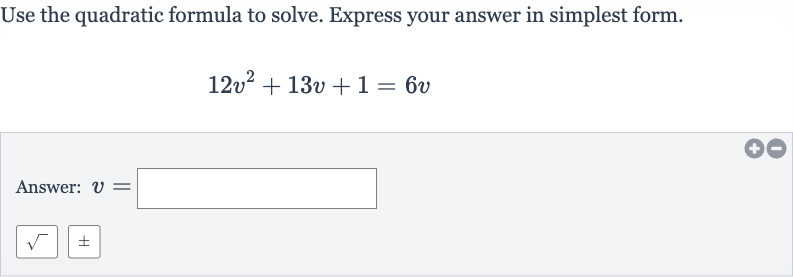AI tutor
Welcome to Bytelearn!
Let’s check out your problem:

Use the quadratic formula to solve. Express your answer in simplest form.Answer:
Full solution
Q. Use the quadratic formula to solve. Express your answer in simplest form.Answer:
- Set Equation Equal: First, we need to bring all terms to one side of the equation to set it equal to zero.This simplifies to:
- Use Quadratic Formula: Now we will use the quadratic formula to solve for , which is given by:For our equation, , , and .
- Calculate Discriminant: Next, we calculate the discriminant, which is the part under the square root in the quadratic formula:Discriminant = Discriminant = Discriminant = Discriminant =
- Apply Quadratic Formula: Since the discriminant is positive, we will have two real and distinct solutions. We can now plug the values of , , and into the quadratic formula:
- Solve for Solutions: We will now solve for the two possible values of :
First solution:
Second solution:
